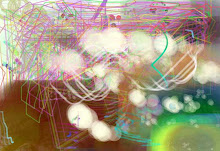
1. Child hood
2. The theme of this design is that I wish the kids interact themselves with outdoors and fun activities. These days, kids seem to be occupied with computers and other electronics, they don’t enjoy the environment around them. I think it’s a waste to not see what the word has to offer.
3. I tried to improve on the design by making the theme clearer. I added in the second child fishing on the letter G. I also tried to make my letters give off a smoother appearance.
4. Three things that I learned from completing this assignment is the combination of colors, a way to make a design look stable, and a way to grab the audiences’ attention. I thought that the use of different colors are very important since it can make a design look attractive and eye catching. It’s crucial to make a design look more stable, so it balances out in pictures. It’s not always necessary that we use outrageous designs to catch the audiences’ attention, because simple designs can make designs look good.
5. I will give about a 3 on this, because of the effort I put into this design. It took a lot of effort to actually draw out all the components of this design. And it was hard to portray the themes in this design, because there are different things that kids might want to do.

1. Education
2. The theme of this design is that I wish people continued on with their education no matter how old they are. I believe that there are a lot of things to learn aside from education that you get from school. And people tend to take it for granted that we have the opportunity to learn.
3. I did not get feedback on this design, because I completed it after the class we had the feedback session on.
4. Three things that I learned from completing this assignment are the brush tool, and the magic wand tool, and simplicity. The brush tool was helpful in making the design, although it was hard to use it once in a while to get a straight line, it let me draw the designs the way I wanted to. The magic wand tool was also helpful in making the design, because it helped me draw the letters without having to draw them by hand. I also used the idea of keeping it simple and eye catching with bright colors.
5. I will give about a 3 on this, because I like how the design looks simple and clean. I also like how I used the colors of the Google, but it still looks eye catching. And I also got a lot more comfortable using the tools for this design, because there were a lot of parts of the design that needed different tools to be used.



 Rectangular Tessellation
Rectangular Tessellation Triangular Tessellation
Triangular Tessellation

 1. Education
1. Education


